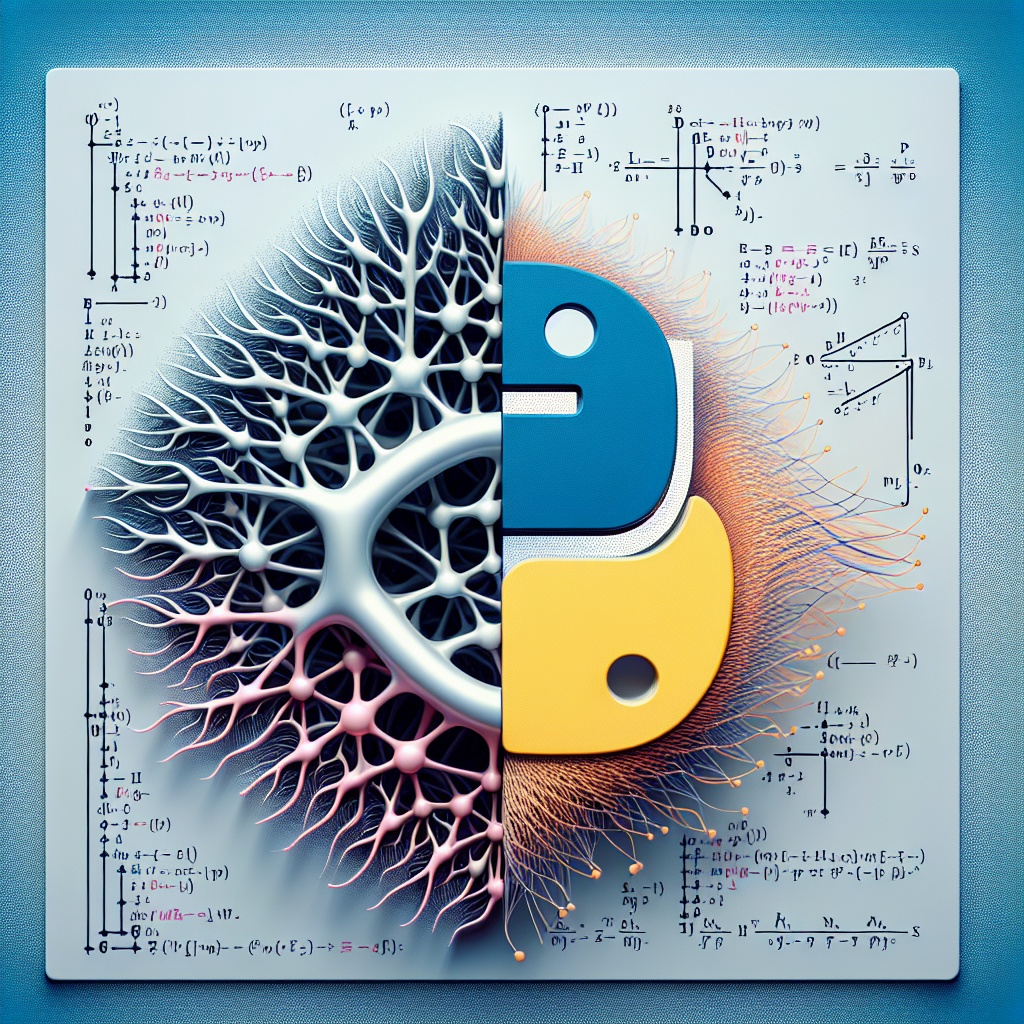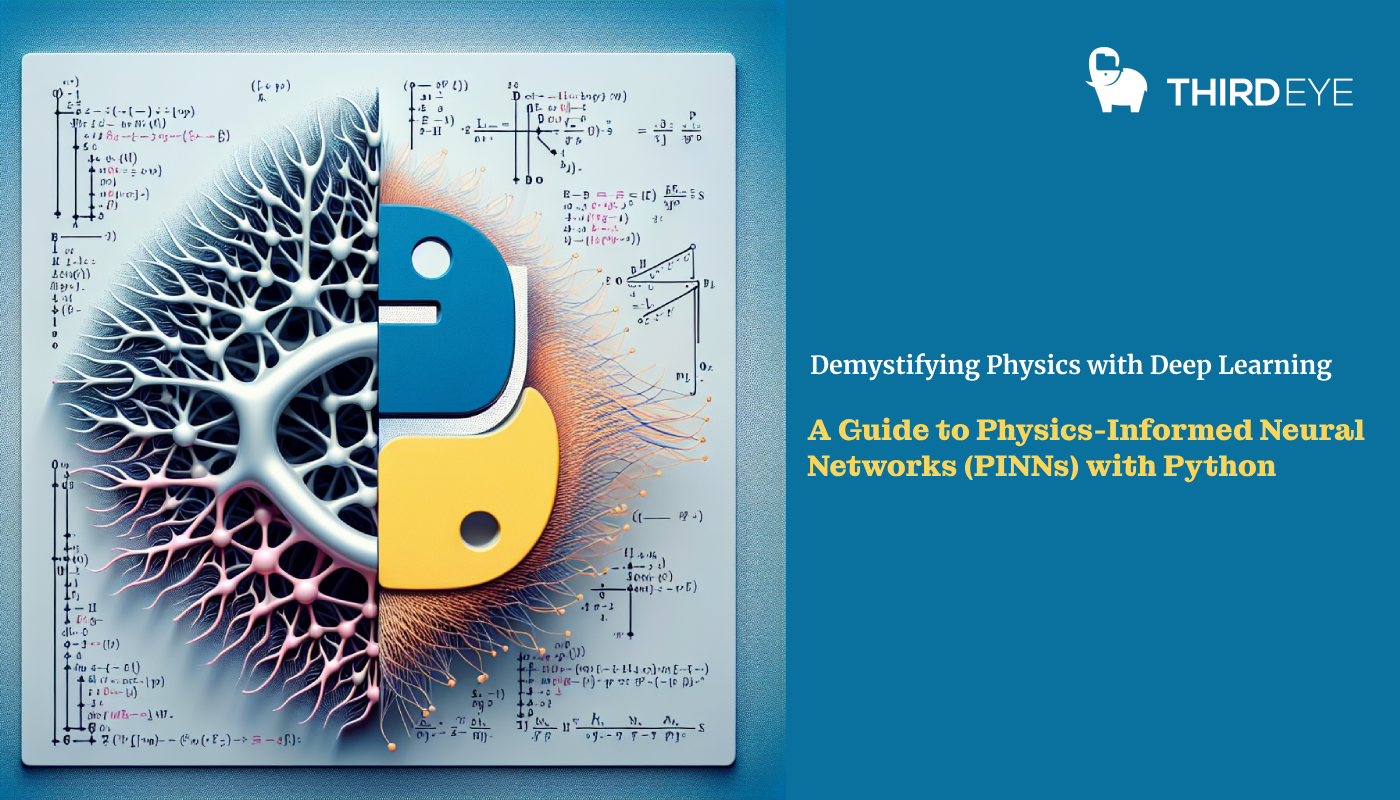ThirdEye Data Guide to Physics-Informed Neural Networks in PythonThirdEye Data Guide to Physics-Informed Neural Networks in PythonDemystifying Physics with Deep Learning: A Guide to Physics-Informed Neural Networks (PINNs) with Python
At ThirdEye Data, we’re passionate about pushing the boundaries of Artificial Intelligence (AI) and its impact on various fields. Today, we delve into a fascinating area – Physics-Informed Neural Networks (PINNs) – and explore their potential with Python.
Imagine this: solving complex physical equations with the ease of feeding data into a computer program. PINNs make this a reality, bridging the gap between deep learning and the established principles of physics.
What are PINNs?
PINNs are a specialized type of neural network designed to tackle the challenge of solving partial differential equations (PDEs) and other physical systems. These networks learn the underlying physical laws by combining data and the governing equations themselves.
Why are PINNs exciting?
Here’s what makes PINNs so captivating:
- Versatility: From fluid dynamics and heat transfer to electromagnetism and wave propagation, PINNs can be applied to a vast array of physical phenomena.
- Efficiency: Compared to traditional numerical methods, PINNs can offer significant computational advantages, especially for intricate geometries or high-dimensional problems.
- Data-driven discovery: PINNs have the potential to uncover unknown physical relationships hidden within data, acting as a catalyst for scientific discovery.
The latest on PINNs:
The global scientific computing market is booming, valued at USD 14.4 billion in 2023 and projected to grow at a CAGR of 10.2% by 2030 (Grand View Research, 2023). This growth reflects the increasing demand for efficient and versatile computational tools, where PINNs are poised to play a significant role.

Furthermore, a 2022 KDnuggets survey revealed that deep learning is the second-most adopted technique (23%) among data scientists, highlighting its growing popularity and potential for various applications, including PINNs.
Getting started with PINNs and Python:
Python, with its rich ecosystem of scientific computing libraries like TensorFlow, PyTorch, and SciPy, is an ideal platform for implementing PINNs. Here’s a roadmap to kick off your exploration:
- Choose your library: TensorFlow and PyTorch offer user-friendly frameworks for building and training neural networks.
- Define your problem: Formulate the governing equations and identify the data you have or plan to acquire.
- Build the PINN architecture: Design the neural network architecture, including the number of layers and activation functions.
- Craft the loss function: Combine data-fitting and physics-enforcing terms into a single loss function to guide the training process.
- Train the PINN: Use an optimizer like Adam to iteratively update the network weights, minimizing the loss function.
- Evaluate and interpret the results: Analyze the trained PINN’s predictions and compare them to analytical solutions or experimental data.
Beyond the basics:
This blog serves as a stepping stone. As you delve deeper, explore advanced topics like:
- Implementing boundary conditions
- Handling complex geometries
- Uncertainty quantification
- Incorporating physical constraints
The future of PINNs:
PINNs hold immense potential to revolutionize various scientific and engineering domains. As research progresses, we can expect:
- Increased adoption: PINNs becoming a standard tool in diverse scientific computing workflows.
- Enhanced accuracy and efficiency: Advancements in neural network architectures and optimization algorithms leading to more robust and efficient PINNs.
- Integration with other AI techniques: Combining PINNs with other machine learning methods for even more comprehensive scientific discovery and engineering design.
At ThirdEye Data, we believe PINNs offer a powerful approach to solving complex problems and unlocking new possibilities. As we continue to explore the frontiers of AI, we’re committed to sharing knowledge and collaborating with like-minded individuals to push the boundaries of what’s possible.






